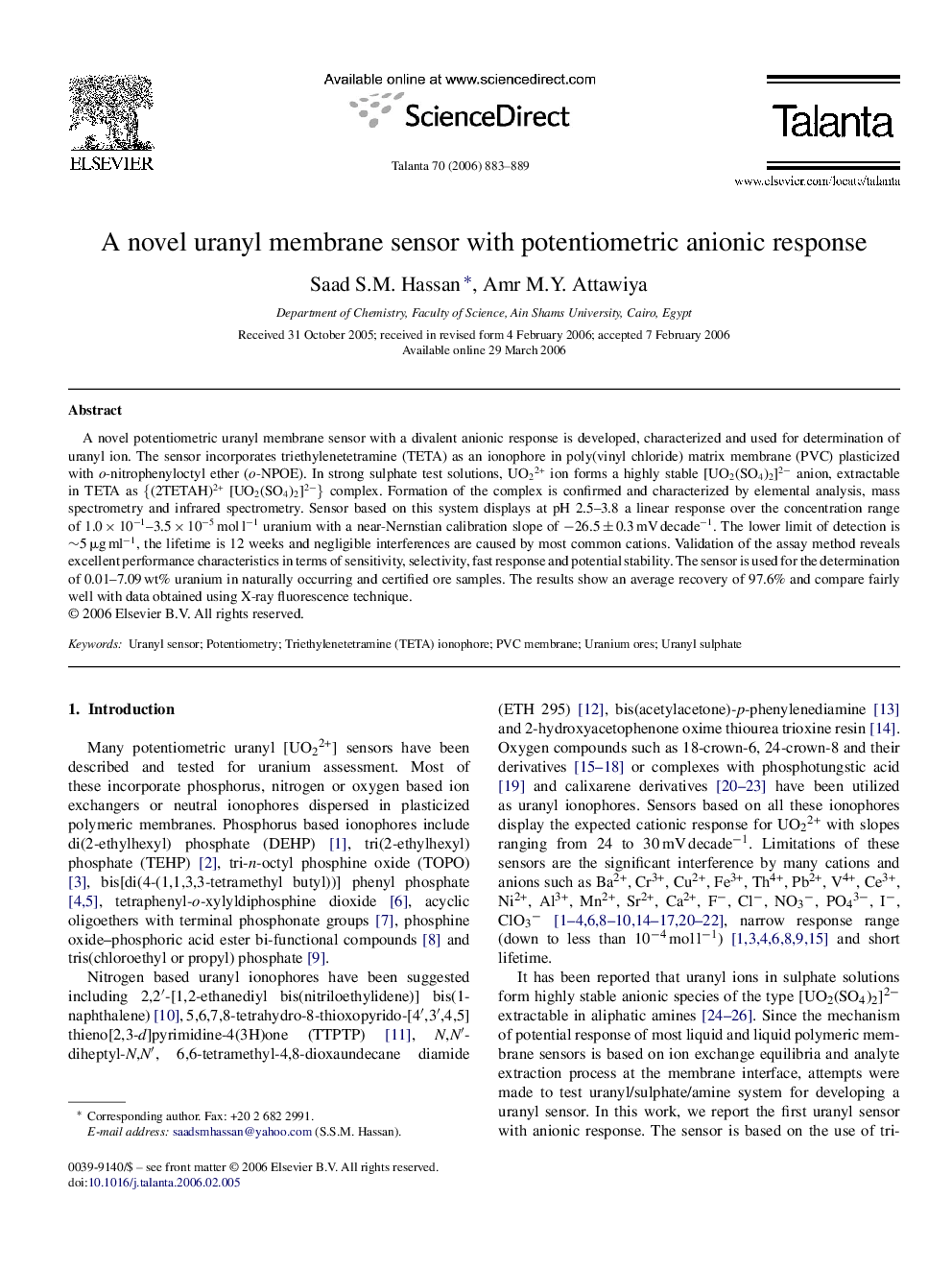| Article ID | Journal | Published Year | Pages | File Type |
|---|---|---|---|---|
| 1246312 | Talanta | 2006 | 7 Pages |
A novel potentiometric uranyl membrane sensor with a divalent anionic response is developed, characterized and used for determination of uranyl ion. The sensor incorporates triethylenetetramine (TETA) as an ionophore in poly(vinyl chloride) matrix membrane (PVC) plasticized with o-nitrophenyloctyl ether (o-NPOE). In strong sulphate test solutions, UO22+ ion forms a highly stable [UO2(SO4)2]2− anion, extractable in TETA as {(2TETAH)2+ [UO2(SO4)2]2−} complex. Formation of the complex is confirmed and characterized by elemental analysis, mass spectrometry and infrared spectrometry. Sensor based on this system displays at pH 2.5–3.8 a linear response over the concentration range of 1.0 × 10−1–3.5 × 10−5 mol l−1 uranium with a near-Nernstian calibration slope of −26.5 ± 0.3 mV decade−1. The lower limit of detection is ∼5 μg ml−1, the lifetime is 12 weeks and negligible interferences are caused by most common cations. Validation of the assay method reveals excellent performance characteristics in terms of sensitivity, selectivity, fast response and potential stability. The sensor is used for the determination of 0.01–7.09 wt% uranium in naturally occurring and certified ore samples. The results show an average recovery of 97.6% and compare fairly well with data obtained using X-ray fluorescence technique.
